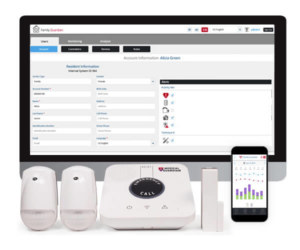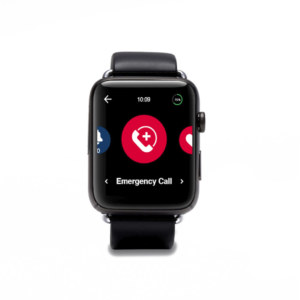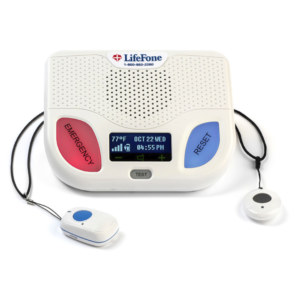What Are The Best Medical Alert Systems For Outside The Home?
AgingInPlace.org keeps our resources free by working as an affiliate partner with some companies mentioned on our site. These partnerships or the commission we may earn do not affect our opinions or evaluations of the products we mention. Our reviews are solely based on our research methodology and from input from our AgingInPlace.org Advisory Board. Learn more about our ad policies.
What Are The Best Medical Alert Systems For ...
Products carousel
The very first medical alert systems had a very limited range. Most worked inside the home from a base station and could only be activated from a limited distance. Modern medical alert systems are very different from these limited originals. For instance, many don’t require a landline at all, use mobile devices and GPS technology, and can be activated anywhere. If you’re wanting a medical alert system for outside the home, here’s a closer look at them to help you find the very best fit.
Key Takeaways
- Medical alert systems for outside the home are available in various types.
- Medical alert systems for outside the home are designed for seniors who spend more time away from home.
- Medical alert systems for outside the home are often more expensive than at-home systems.

What Are Medical Alert Systems for Outside the Home?
Medical alert systems for outside the home are often called on-the-go or mobile medical alert systems. These systems are designed to give an emergency alert from wherever the user may be–not just when they are at home.
How Do These Medical Alert Systems Work?
Medical alert systems for outside the home are not landline-based at all. Instead, these systems usually tap into an existing cellular network. The systems the emergency service uses to find the user and send emergency responders vary. Some use 911 location systems, while medical alerts with GPS use that technology, and a few still require you to state your location when calling for help.
How Are They Different From In-Home Medical Alert Systems?
Medical alert systems designed for use inside the home most often have two components–a base station and a wearable pendant or wall button. The base station acts as a signal receiver for a wall button or pendant. If the emergency button is pressed, help is immediately summoned. These systems typically have a range where they can be activated, which is normally anywhere from 600 feet-1,500 feet. Medical alert systems for outside the home typically consist of one signaling device, like a wearable pendant, medical alert watches, or medical alert bracelets. These systems can be activated anywhere and do not need a base station to work. The signaling device either works with a replaceable battery or needs to be charged in a special charging station. Some devices are also connected to a wireless network and offer monitoring apps and other special features.
What Are Pros and Cons of Medical Alert Systems for Outside the Home?
Pros
- Can be used anywhere–no range limit
- No need for a landline
- Most contain fall detection and GPS location features
Cons
- Pendant or device needs to be charged or have a battery replaced
- Must have the device on your person for it to work
- Typically cost more than in-home systems
Who Are These Systems For?

Personal emergency response systems (PERS) for outside the home are designed for active seniors and seniors who spend a lot of time traveling. These systems give these individuals the security of knowing that they can always summon help in an emergency, even if they are not at home. Conversely, seniors who only need a system for when they are home alone are more likely to be satisfied with an at-home medical alert system.
Best Medical Alert Systems For Outside The Home Reviews:
- Medical Guardian: Best for Active Seniors
- HandsFree Health: Best smartwatch/system for caregivers
- LifeFone: Best Battery Life
TABLE OF CONTENTS
- Key Takeaways
- What Are Medical Alert Systems For Outside The Home?
- How Do These Medical Alert Systems Work?
- How Are They Different From In-Home Medical Alert Systems?
- What Are Pros And Cons Of Medical Alert Systems For Outside The Home?
- Medical Guardian
- HandsFree Health
- LifeFone
- How To Choose The Best Medical Alert System Outside The Home
- Bottom Line
- Why You Can Trust Our Review
- FAQs
Medical Guardian offers three different on-the-go systems. The Mobile Guardian 2 offers a lightweight pendant that can be worn or clipped to a belt or bag. The Mini-Guardian has one of the most lightweight pendants available, weighing only 1.3 ounces. The MGMove has built-in fall detection features and a high definition speaker.
Mobile Guardian 2
- $39.95 monthly fee ($36.62 if paid by the year)
- $124.95 equipment fee
- Fall detection pendant for $10 per month
Mini Guardian
- $39.95 monthly fee ($36.62 if paid by the year)
- $124.95 equipment fee
- Fall detection pendant for $10 per month
MGMove
- $39.95 monthly fee ($36.62 if paid by the year)
- $199.95 equipment fee
Pros
- Three different outside the home options
- Five-day battery life for Mobile Guardian 2 and Mini Guardian
- Location trackers available
- Lightweight, easy to carry devices available
Cons
- Fall detection costs extra
- Fall detection not available with MGMove smartwatch
- High initial equipment fee
- No warranty for equipment
See Our Full Medical Guardian Review
HandsFree Health offers two on-the-go medical alert system options. One, the WellBe smartwatch, connects to the WellBe smart speaker. You can ask questions or request that it call for emergency help. The smartwatch contains Bluetooth connectivity, enabling it to be combined with other smart devices as well as various monitoring features that can help caregivers keep track of a loved one, including monitoring their vital signs. The WellBe Medical Alert Plus is a bundled option that combines an at-home system based on the WellBe smart speaker with the WellBe smartwatch.
WellBe Smartwatch
- $44.95 monthly fee
- $119.95 equipment fee
WellBe Medical Alert Plus
- $54.95 monthly fee
- $159.95 equipment fee
Pros
- Smartwatch option available
- Bluetooth features
- Has a tablet option
- Smart speaker feature
- Several different reminder options
Cons
- High equipment fees
- No option for fall detection
See Our Full HandsFree Health Review.
If what you’re looking for is long battery life, LifeFone has you covered. The company offers two different on-the-go systems that have exceptional battery life. The VIP system has a 30-day battery life and the VIPX system provides a 16-day battery life. The VIPX also offers a caregiver app that sends notices to caregivers about the user’s first motion of the day and button presses, and also has a location feature.
At-Home And On-The-Go, VIP
- $39.95 monthly fee
- Fall detection for $5 per month
At-Home & On-The-Go, VIPX
- $41.95 monthly fee
- Fall detection for $5 per month
Pros
- Long battery life
- Free support for spouses
- Caregiver resources available
- No long-term contract needed
- Pendants available for help button
Cons
- Pricey add-on features
- Higher monthly fees than some other providers
See Our Full LifeFone Review.
How to Choose the Best Medical Alert System Outside the Home
If you think you need a medical alert system for outside the home, decide what features you actually need first. Some systems just consist of a wearable pendant, and some systems are smart systems with associated apps and other features.
Once you have decided what features you need, look at system prices. The medical alert systems with more features usually cost more per month and may have extra fees for device rental or setup. You may decide the extra costs are worth it, or you may decide those features aren’t what you really need. If you’re a caretaker for a senior who needs a medical alert system, smart systems may be invaluable. It is also noteworthy that some companies offer deals if you sign up for a whole year at once instead of paying month to month.
If you plan to spend a lot of time outside your home, look at battery life. Pendants and other wearable devices that need to be charged should last long enough for daily use but be recharged overnight. Also, a waterproof pendant or button is essential in case it rains while you are outdoors.
Bottom Line
Medical alert systems for outside the home are most suited to active seniors that spend a lot of time outside the home. These systems typically cost more than at-home systems, but often have other features that some may consider worth the cost. If you’re looking for a medical alert system that works outside the home, think about what you want out of the system and its battery life.
Why You Can Trust Our Review
Our AgingInPlace.org medical alert experts independently research and recommend products we believe provide value to the lives of our readers. We’ve collectively spent more than 1,700 hours conducting in-depth research on medical alert systems. Throughout this process, we:
- Engaged in ongoing independent research
- Consulted with geriatricians and adult caregivers
- Mystery shopped the brands
- Surveyed medical alert system users
- Tested various medical alert systems
Frequently Asked Questions
-
Not all medical alert systems work outside the home, but there are many systems that do.
-
At-home medical alert systems may require a landline, while medical alert systems for outside the home work on cellular networks.
-
Medical alert systems for outside the home do not have a range, but at-home systems usually have a range of 600-1,500 feet from the base station.
-
Mobile medical alerts can work without a landline, outside the range of an at-home system, and can continue to work when there is no power.
-
Mobile medical alert systems are more expensive because they have to work in a greater variety of places and often have other built-in features built that drive up the cost.
-
Most mobile medical alert systems for outside the home can be purchased from the website of the company that makes them.
Author: Annie Keller
WRITTEN BY
Annie Keller is a freelance medical writer in Lowell, Mass. She has worked for a variety of medical publications and organizations. She has written about chronic illness, medical technology and devices, medical issues in the news, skin treatments, sports medicine, and many different conditions.
View AuthorDo you want to cite this page? Use our ready-made cite template.







